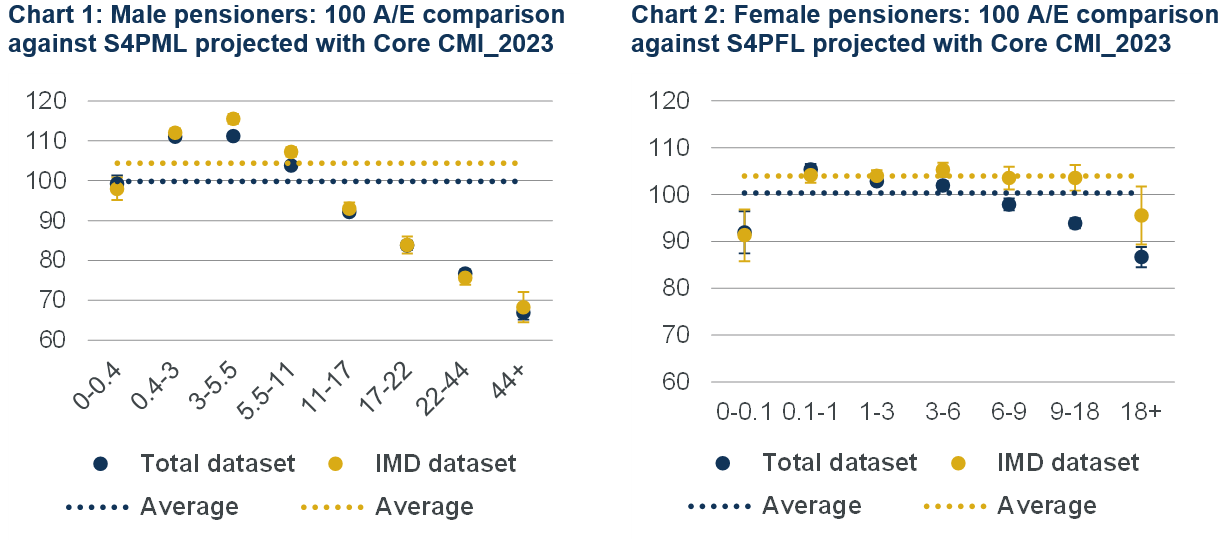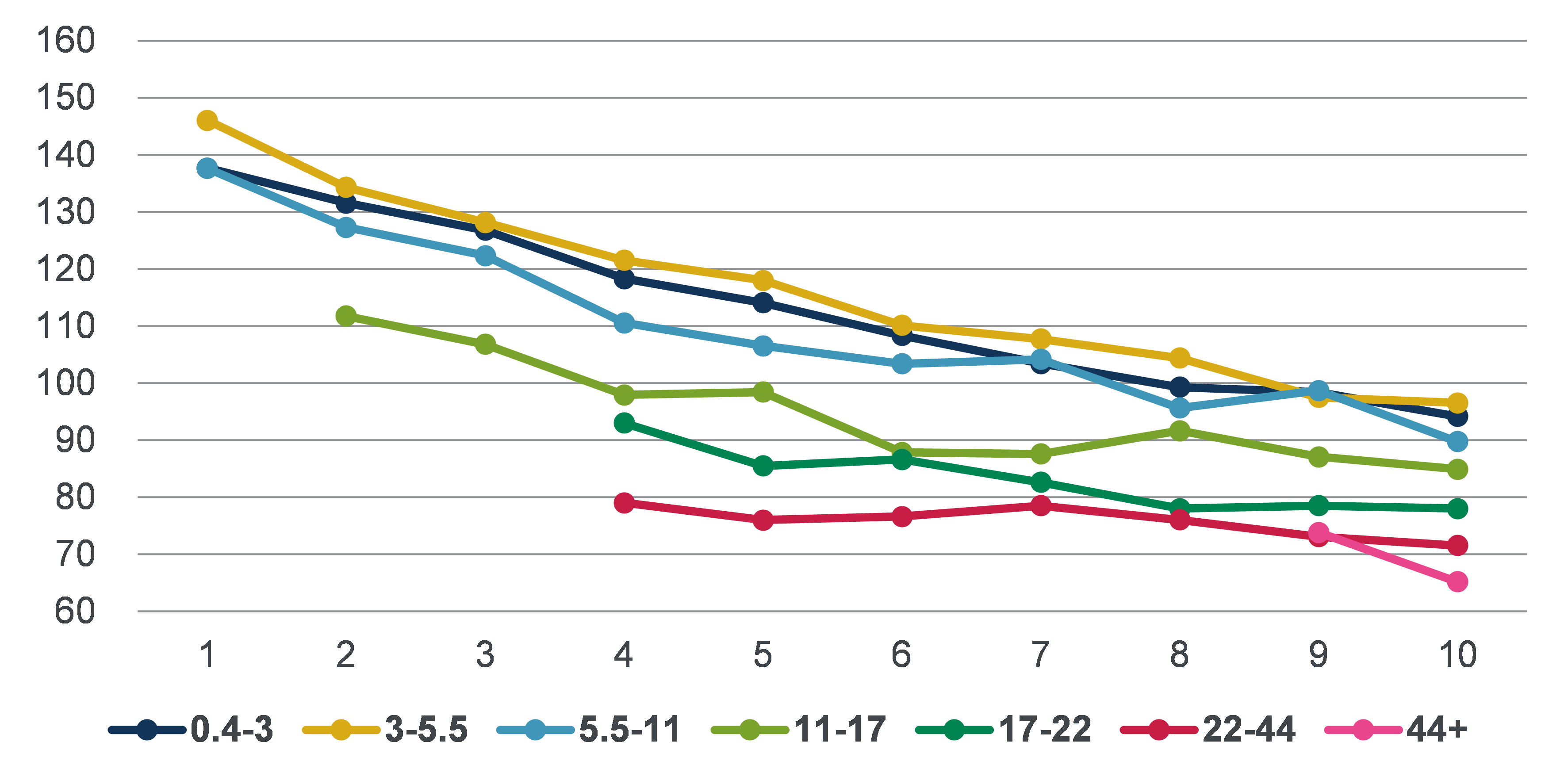 The Continuous Mortality Investigation (CMI) Self-administered Pension Schemes (SAPS) Committee has published a multi-factor analysis of the mortality experience of members of UK defined benefit pension schemes. This is the first analysis of its kind, but we have considered the factors in isolation in previous analyses.
The Continuous Mortality Investigation (CMI) Self-administered Pension Schemes (SAPS) Committee has published a multi-factor analysis of the mortality experience of members of UK defined benefit pension schemes. This is the first analysis of its kind, but we have considered the factors in isolation in previous analyses.
This blog briefly summarises key points from the analysis. CMI Subscribers can find more detail in Working Paper 194.
The SAPS investigation collects data for self-administered defined benefit pension schemes with more than 500 pensioners. This is provided by actuarial consultancies, the Pension Protection Fund (PPF) and the Government Actuary’s Department (GAD) and covers both private sector and public sector schemes.
In this paper, we analyse a large dataset covering 2015-2022, comprising over 400 pension schemes, and around 26,500,000 person-years of exposure. We exclude the 2020 and 2021 calendar years from our analysis, as the experience in those years is unusual due to the pandemic.
Throughout the paper, we split our analysis by:
We analyse the data by pension amount band, industry, IMD decile, and region.
Pension amount band – For most groups, mortality experience becomes lighter (i.e. mortality rates are lower) as pension amount band increases. Experience for female pensioners is the least sensitive to pension amount band, with this being demonstrated most clearly in the IMD dataset. We show the 100 “Actual / Expected” results for male pensioners (left) and female pensioners (lright) below.

Industry – Mortality experience varies by industry – typically being lightest for the “Government/Civil Service” and the “Financials” industries. The range of experience by industry is narrower than the range of experience by pension amount band, when considered separately.
IMD decile – For all three pensioner types, mortality clearly becomes lighter as IMD decile increases (i.e. the deprivation level decreases).
Region – Experience appears heaviest in Scotland, and lightest in the South East and South West of England.
We comment on each combination of factors in the paper, but only highlight some of the results below.
Pension amount band & industry – For male pensioners, the overall range of mortality experience by pension amount band is wider than the range of mortality experience by industry, indicating that pension amount band is a stronger predictor of experience than industry. However, for female pensioners, industry appears a stronger predictor; and for female dependants, both factors appear equally useful.
Pension amount band & IMD decile – As seen in previous analyses, for female pensioners, IMD decile is a much more useful predictor of mortality experience than pension amount band, with the exception of the individuals with the highest pension amounts. Both pension amount and IMD decile are a clear predictor of mortality for male pensioners (shown in the chart below).

IMD decile & region – For all three pensioner types, the range of experience by IMD decile is wider than the range of experience by region, indicating that IMD decile is a stronger predictor of experience than region. However, some regions have a narrower spread of experience by IMD decile than others.
We conclude the paper by completing an initial investigation into Generalised Linear Modelling (GLM). A GLM analysis should present a good indication of the importance of each factor, as the models consider the effects of multiple factors simultaneously.
We will continue to collect pension scheme data and are planning to publish our next annual analysis of mortality experience (covering data from 2016 to 2023) by the end of the year.
We will also continue to produce “one-off” analyses, like the multi-factor analysis, and encourage CMI Subscribers to suggest any topics that they would like to see us investigate.